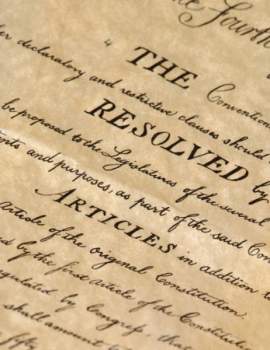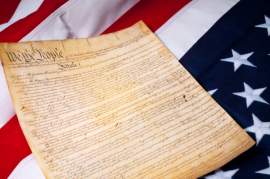
Brown v. Board of Education

Popular In Constitution
Purpose Of Lifetime Appointment And Pros And Cons Enumerated Powers Bicameral Legislature Background Article 3 Of The Constitution We The People 1st Amendment Who Wrote The Constitution Judicial Review Equal Protection Clause Three Fifths Compromise 10th Amendment 5th Amendment
Brown v. Board of Education of Topeka (1954) was a United States Supreme Court case that ruled that the practice of separating public schools based on race was unconstitutional under the Equal Protection Clause of the Fourteenth Amendment. This landmark Supreme Court decision overturned the 1896 ruling of Plessy v. Ferguson, which upheld the constitutionality of the Separate but Equal Doctrine. Brown v. Board of Education determined that this separation of black and white students provided unequal educational opportunities for black children.
Prior to this court case, it was held by the Supreme Court that
racial segregation was not unconstitutional according to the Fourteenth
Amendment as long as the facilities were kept equal. The Due Process Clause
entitles citizens to certain legal procedures before being denied the right to
life, liberty, and property.
The Equal Protection Clause, which is of significant importance in
Brown v. Board of Education, requires that states provide the same amount of
rights and protection to all citizens. The main argument in this case was that
the Separate but Equal Doctrine was not effective because the accommodations
for blacks’ educational institutions were far inferior to those for whites.
A class action suit was filed in 1951 by thirteen families against
the City of Topeka, Kansas. Many of these children were forced to attend a
school that was several miles from their houses because the closest
institutions were considered white only. Under the leadership of the NAACP,
these parents attempted to enroll their children in the closest elementary
schools, but were denied and sent to the segregated schools.
In Brown v. Board of Education, the main finding
of the Court was that even if schools were equal in educational standards,
segregation of black students was detrimental to their educational success and
unconstitutional. Expert testimony was presented in court that showed
segregation had a negative effect on the mental well-being of black Americans.
The Court concurred that even if it was found that the black and white schools
were evenly matched, which in fact many were not, the act of segregation itself
was unconstitutional. The previous ruling in Plessy v. Ferguson ruled on the
aspect of equality in the Separate but Equal Doctrine. Brown v. Board of Education
focused on the "separate" aspect, declaring this against the Equal Protection
Clause of the Fourteenth Amendment.
Due to the ruling in Brown v. Board of Education,
the City of Topeka integrated their elementary schools. Students were assigned
to the school closest to their neighborhood, regardless of their race. There
was some severe resistance to the Brown v. Board of Ed decision. The Massive
Resistance, for example, took place in Virginia where Senator Byrd resorted to
closing down schools rather than desegregating them. In Arkansas, black
students were blocked from entering Little Rock High School. Brown v. Board of
Education was a landmark Supreme Court decision because it denied the claims of
scientific racists that segregation was beneficial for black students.


















